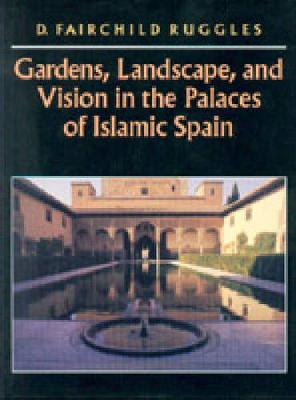Islamic gardens, with their waterways and beds of plants and trees, are generally regarded as an earthly reflection of paradise. D. Fairchild Ruggles offers a new interpretation, contending that the palace garden was primarily an environmental, economic, and political construct.
She discusses three aspects of medieval Islamic Spain: the landscape and agricultural transformation documented in Arabic scientific literature, the formation of the garden and its symbolism from the eighth through the fifteenth centuries, and the role of the gaze and the frame in the spatial structures through which sovereignty was constituted.
Although the repertory of architectural and garden forms was largely unchanged from the tenth through the fifteenth centuries, Ruggles explains that their meaning changed dramatically. The royal palace gardens of Cordoba expressed a political ideology that placed the king above and at the center of the garden and, metaphorically, of his kingdom.
This conception of the world began to falter in later centuries, but patrons clung to the forms and motifs of the golden age. Instead of creating new forms, artists at the Alhambra in Granada reworked and refined familiar vocabulary and materials. The vistas fixed by windows and pavilions referred not to the actual relationship of the king to his domain but rather to the memory of a once-expanding territory.
- ISBN10 0271018518
- ISBN13 9780271018515
- Publish Date 16 March 2000
- Publish Status Out of Print
- Out of Print 11 December 2009
- Publish Country US
- Imprint Pennsylvania State University Press
- Format Hardcover
- Pages 296
- Language English
